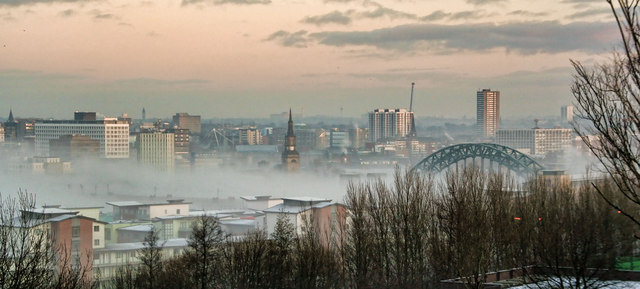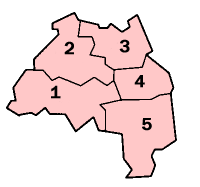|
Blakelaw And North Fenham
Blakelaw and North Fenham is a civil parish in the City of Newcastle upon Tyne in Tyne and Wear, England. It is north west of the city centre, and is entirely surrounded by the unparished area of Newcastle upon Tyne. It covers the areas of Blakelaw, Cowgate The Cowgate ( Scots: The Cougait) is a street in Edinburgh, Scotland, located about southeast of Edinburgh Castle, within the city's World Heritage Site. The street is part of the lower level of Edinburgh's Old Town, which lies below the ele ... and North Fenham, and has a population of 6,468, decreasing slightly to 6,452 at the 2011 Census. References External links * Blakelaw and North Fenham Parish Council Civil parishes in Tyne and Wear Geography of Newcastle upon Tyne {{TyneandWear-geo-stub ... [...More Info...] [...Related Items...] OR: [Wikipedia] [Google] [Baidu] |
Tyne And Wear
Tyne and Wear () is a metropolitan county in North East England, situated around the mouths of the rivers Tyne and Wear. It was created in 1974, by the Local Government Act 1972, along with five metropolitan boroughs of Gateshead, Newcastle upon Tyne, Sunderland, North Tyneside and South Tyneside. It is bordered by Northumberland to the north and Durham to the south; the county boundary was formerly split between these counties with the border as the River Tyne. The former county council was based at Sandyford House. There is no longer county level local governance following the county council disbanding in 1986, by the Local Government Act 1985, with the metropolitan boroughs functioning separately. The county still exists as a metropolitan county and ceremonial purposes, as a geographic frame of reference. There are two combined authorities covering parts of the county area, North of Tyne and North East. History In the late 600s and into the 700s Saint Bede lived ... [...More Info...] [...Related Items...] OR: [Wikipedia] [Google] [Baidu] |
Newcastle Upon Tyne
Newcastle upon Tyne ( RP: , ), or simply Newcastle, is a city and metropolitan borough in Tyne and Wear, England. The city is located on the River Tyne's northern bank and forms the largest part of the Tyneside built-up area. Newcastle is also the most populous city of North East England. Newcastle developed around a Roman settlement called Pons Aelius and the settlement later took the name of a castle built in 1080 by William the Conqueror's eldest son, Robert Curthose. Historically, the city’s economy was dependent on its port and in particular, its status as one of the world's largest ship building and repair centres. Today, the city's economy is diverse with major economic output in science, finance, retail, education, tourism, and nightlife. Newcastle is one of the UK Core Cities, as well as part of the Eurocities network. Famous landmarks in Newcastle include the Tyne Bridge; the Swing Bridge; Newcastle Castle; St Thomas’ Church; Grainger Town including G ... [...More Info...] [...Related Items...] OR: [Wikipedia] [Google] [Baidu] |
Newcastle Upon Tyne Central (UK Parliament Constituency)
Newcastle upon Tyne Central is a constituency represented in the House of Commons of the UK Parliament since 2010 by Chi Onwurah of the Labour Party. As with all constituencies, the constituency elects one Member of Parliament (MP) by the first past the post system of election at least every five years. History Parliament created this seat under the Representation of the People Act 1918 for the general election later that year. It was one of four divisions of the parliamentary borough of Newcastle-upon-Tyne, which had previously been represented by one two-member seat. The constituency currently covers the central part of Newcastle upon Tyne, being one of three constituencies in the city. Between 1983 and 2010, the seat did not actually include the city's commercial centre, being instead part of the now-abolished Tyne Bridge constituency. From its creation, the constituency has been represented by only members of the Labour and Conservative parties. The seat has been repr ... [...More Info...] [...Related Items...] OR: [Wikipedia] [Google] [Baidu] |
Civil Parishes In England
In England, a civil parish is a type of Parish (administrative division), administrative parish used for Local government in England, local government. It is a territorial designation which is the lowest tier of local government below districts of England, districts and metropolitan and non-metropolitan counties of England, counties, or their combined form, the Unitary authorities of England, unitary authority. Civil parishes can trace their origin to the ancient system of Parish (Church of England), ecclesiastical parishes, which historically played a role in both secular and religious administration. Civil and religious parishes were formally differentiated in the 19th century and are now entirely separate. Civil parishes in their modern form came into being through the Local Government Act 1894, which established elected Parish councils in England, parish councils to take on the secular functions of the vestry, parish vestry. A civil parish can range in size from a sparsely ... [...More Info...] [...Related Items...] OR: [Wikipedia] [Google] [Baidu] |
City Of Newcastle Upon Tyne
Newcastle upon Tyne ( RP: , ), or simply Newcastle, is a city and metropolitan borough in Tyne and Wear, England. The city is located on the River Tyne's northern bank and forms the largest part of the Tyneside built-up area. Newcastle is also the most populous city of North East England. Newcastle developed around a Roman settlement called Pons Aelius and the settlement later took the name of The Castle, Newcastle, a castle built in 1080 by William the Conqueror's eldest son, Robert Curthose. Historically, the city’s economy was dependent on its port and in particular, its status as one of the world's largest ship building and repair centres. Today, the city's economy is diverse with major economic output in science, finance, retail, education, tourism, and nightlife. Newcastle is one of the UK Core Cities Group, Core Cities, as well as part of the Eurocities network. Famous landmarks in Newcastle include the Tyne Bridge; the Swing Bridge, River Tyne, Swing Bridge; The Ca ... [...More Info...] [...Related Items...] OR: [Wikipedia] [Google] [Baidu] |
Newcastle Upon Tyne City Centre
Newcastle City Centre is the city centre district of Newcastle upon Tyne, England. It is the historical heart of the city and serves as the main cultural and commercial centre of the North East England region. The city centre forms the core of the Tyneside conurbation. The city centre district is sometimes subdivided into the areas of Newcastle Haymarket, Haymarket, Quayside, Grainger Town, Grey's Monument, Monument, Gallowgate, and Chinatown, Newcastle, Chinatown. Areas Haymarket Newcastle Haymarket, Haymarket is the northern edge of the city centre bordered by Spital Tongues and Jesmond to the north west and north east respectively. It is the location of Newcastle Civic Centre, Newcastle University, Northumbria University, Haymarket bus station and the City Pool, and is mainly a business area. The Church of St Thomas the Martyr is a prominent landmark in the area opposite the Metro station at the northern end of Northumberland Street, the city's main shopping street. Quay ... [...More Info...] [...Related Items...] OR: [Wikipedia] [Google] [Baidu] |
Blakelaw
Blakelaw is an electoral ward situated in the West End of the city of Newcastle upon Tyne in North East England. The population of the ward is 11,186, which is 4.6% of the city's population. Car ownership in the area is 50.6%: this is lower than the city average of 54.7%, increasing to 11,507 at the 2011 Census. House prices in this area average at £114,000 (Feb 2007). Blakelaw was developed in the early part of the 20th century in order to meet demand for more housing in the North East. During the Second World War a secret war centre was built in the old quarry and extended many levels below ground. This was the headquarters for No 13 Group, who played a vital part in the Battle of Britain. Five posts have been installed in Blakelaw Park as part of a 'listening trail' which tells the story of the life of the bunkers and people who worked in them. In terms of the Demographics of Blakelaw, it is very similar to many other parts of Newcastle. For age groups, 26.3% were 17 year ... [...More Info...] [...Related Items...] OR: [Wikipedia] [Google] [Baidu] |
Cowgate, Newcastle Upon Tyne
Cowgate is a locality in the north-west of Newcastle upon Tyne, England. It lies 2.8 miles Northwest of the City Centre. Initially it was in the Kenton ward up until 2018 which it was in the Blakelaw Blakelaw is an electoral ward situated in the West End of the city of Newcastle upon Tyne in North East England. The population of the ward is 11,186, which is 4.6% of the city's population. Car ownership in the area is 50.6%: this is lower tha ... ward. The name is believed to come from the gate the local farmers would use from the Nuns Moor area to herd their livestock to the Newcastle cattle market. The Cowgate estate was built in the 1920s. In 2007 the Index of Multiple Deprivation identified the southern part of the estate as the most deprived area in the city and the 28th most deprived in England. Carricks Bakery, which was later acquired by Greggs, was located in the area. The bakery was closed in 2005, and the work was transferred to other facilities in Newcastle. ... [...More Info...] [...Related Items...] OR: [Wikipedia] [Google] [Baidu] |
Civil Parishes In Tyne And Wear
A civil parish is a country subdivision, forming the lowest unit of local government in England. There are 10 civil parishes in the ceremonial county of Tyne and Wear, most of the county being unparished; North Tyneside and South Tyneside are completely unparished. It is the County of England with the least count of civil parishes. At the 2001 census, there were 41,044 people living in the 10 parishes, accounting for 3.8 per cent of the county's population. History Parishes arose from Church of England divisions, and were originally purely ecclesiastical divisions. Over time they acquired civil administration powers.Angus Winchester, 2000, ''Discovering Parish Boundaries''. Shire Publications. Princes Risborough, 96 pages The Highways Act 1555 made parishes responsible for the upkeep of roads. Every adult inhabitant of the parish was obliged to work four days a year on the roads, providing their own tools, carts and horses; the work was overseen by an unpaid local appointe ... [...More Info...] [...Related Items...] OR: [Wikipedia] [Google] [Baidu] |




